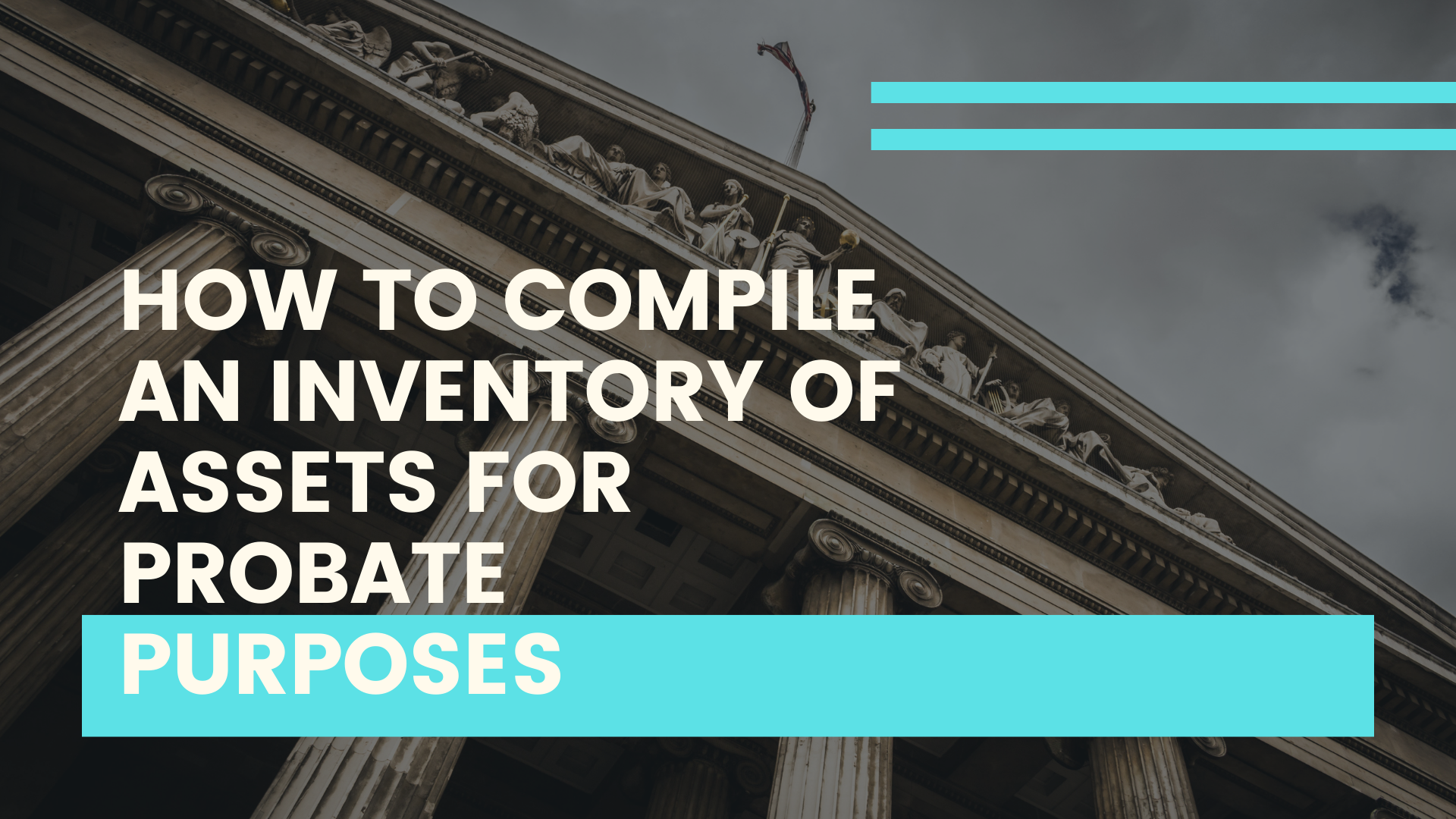Now Reading: How to Compile an Inventory of Assets for Probate Purposes
-
01
How to Compile an Inventory of Assets for Probate Purposes

How to Compile an Inventory of Assets for Probate Purposes
Probate is said to be the legal process that happens after the event of a decedent’s death. It determines how the decedent’s estate will be distributed and .
An executor in charge of administering the decedent’s estate then must have gone through the process of filing the petition to begin probate, and would probably have sent a notice to all the individuals understanding the probate process.
The next step would be to make a complete list of and appraise all the assets that might be subject to probate. This is called an inventory of assets and is done for presentation to the court. This inventory is usually done between a month and 90 days from the date of death. It contains a list of assets that were owned by the decedent and also provides the values of the assets at the time of death. The process of inventorying a decedent’s assets should be thorough and complete because it will serve as a guide for the repayment of debts, payment of tax and it will play an important role in sharing the estate among beneficiaries.
Requirements for Probate Inventory of Assets
Let us take a look at the different processes required to successfully create an inventory of probate assets. Usually, the executor of the estate gets a blank inventory form from the probate court. These usually come with a detailed set of instructions, the probate decree, and the executor certificate. However, depending on the state the executor might have to apply for the form or download it from the website of the probate court. The inventory form usually comes with different sections for each category of assets and It should be filled accordingly.
If there is a will, then it should be reviewed before the inventory commences. This is to make sure that all the assets to be included in the inventory are probate assets and that they do not have self-contained beneficiaries.
The next thing to do would be to gather information and documents on the various probate assets that would be listed in the inventory. It is usual practice to start with properties within the living quarters of the decedents. Documents that have legal bearing like the deeds for real estate, titles for vehicles should be gathered. Information about the financial assets of the deceased should also be gotten and documented. If there are any missing items then attempts should be made to recover them, making use of an attorney when necessary. Items of worth that could not be recovered should be recorded and items that are not worth the effort it would take to find them should be ignored but duly recorded.
When recording cash assets, record the details of the financial institutions, the details of the account, and the value of the account at the date of death. For assets that are not cash, an appraisal of the asset is usually carried out. These appraisals are provided together with the lists present in the inventory forms. They provide the executor with the values of these assets at the time of death of the decedent. A critical description of each real estate asset should be provided. This should include the address and a parcel number when obtainable.
Finally, notes should be taken of the debts owed by the deceased. Check for utilities, arrears of rents, unpaid telephone bills e.t.c. Loans and debts owed to individuals should be recorded and paid off when necessary. Sometimes the expenses for the funeral are also considered liabilities and in some states, they are treated as such. The executor should always refer to the instructions given by the state.
Filling an inventory of assets form might be confusing especially when not sure of what you should consider probate and non-probate assets. So this article includes a checklist as a guide to the assets that should be included in an inventory and those that should not.
Probate Inventory of Assets Checklist
What this part of this article does is provide you with a complete and in-depth list of assets and other information that should be in a probate inventory. It is important that the rules of the state as regards probate be met. As these rules vary from state to state it is important that the executors know the specifics.
- Real Estate
There should be an appraisal of all real estate properties owned by the decedents and their deeds located. This should also include all the water and mineral rights. It should, also, include any mortgages on the property and the bank holding the mortgage, and the amount owed to each financial institution. Documentation that shows any legal bearing on the property should be obtained as well as those that show the description of the property in respect to type and address. These should be gathered and the net value of all the real estate owned by the decedent calculated.
- Subject Finances
This inventory should also contain the financial assets that belonged to the deceased. This includes but is not limited to bank accounts, safety deposit boxes, and brokerage accounts. The financial institutions holding these assets might demand proof of death before they give you the details of these assets so the executor might have to provide the death certificate for them to give out these details.
You should also check for other forms of financial deliverables like saving bonds and certificates, promissory notes, and annuities. Usually, the retirement plans of the decedent are also listed here. However, remember to follow the inventory rules that are applicable to your state.
- Decedent’s Vehicle
Any paper that has legal implications on vehicles owned by the deceased should also be acquired. The values of these vehicles should also be noted. If there are any outstanding vehicle debts then this should be noted as well.
- Interest and Other Forms of Asset
Also, include a detailed list of any form of personal property the deceased might have acquired throughout their existence. They could be antiques, coins, toys, jewelry, clothes, art, or even furniture. These should be photographed and/or videotaped for record-keeping purposes. The values of these personal belongings at the date of death should be recorded and the executor should be able to include fair market value for each item listed. If they find out that they cannot then, where required, they should seek out a professional appraisal.
The inventory should also contain details of assets such as timeshare interests, club memberships, intellectual property, and any form of royalties.
What Assets are Excluded from An Inventory of Assets
When creating an inventory of assets, some things are not necessary and should be excluded. It is important you take note of assets that are considered probate assets. These are the assets that should be listed on the inventory. The other kind of assets are considered non-probate and should not be listed here.
These are assets that come with their beneficiaries. A life insurance policy for example should not be included in this inventory as life insurance has self-contained beneficiaries. The same goes for retirement accounts.
Jointly owned assets should also not be included in the inventory of assets as they are, as a rule, passed on to the surviving owner and so there would be no need for it to be included in the inventory.
Assets that were held in trust by the deceased are also considered non-probate assets. This is because they are to return to the possession of the trustor at the instance of a trustee’s death. They are therefore excluded from the entire probate process and as such from the inventory,
However, it is important to properly document these exemptions and the reasons why they were not included in the probate process. That way nothing is left to chance.









